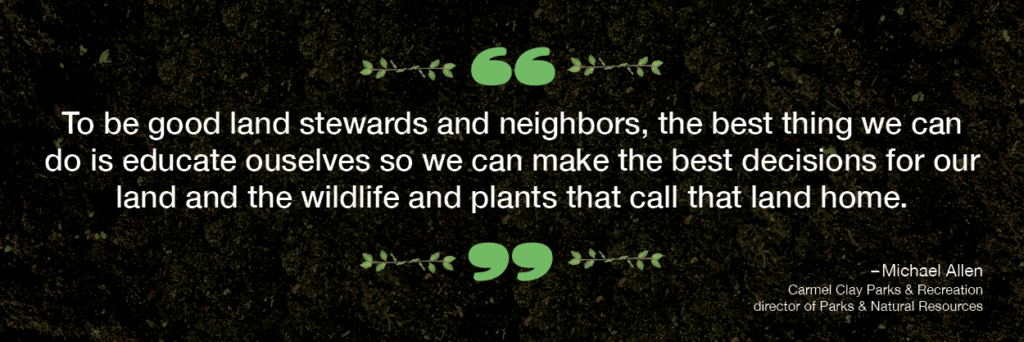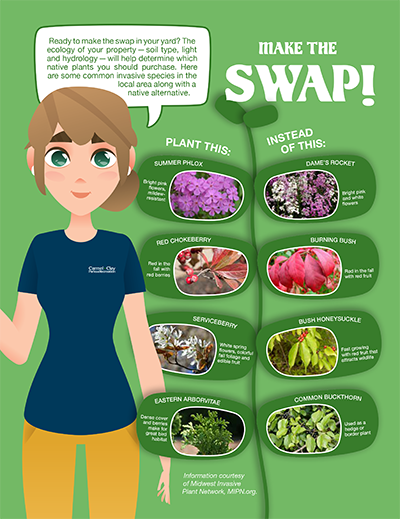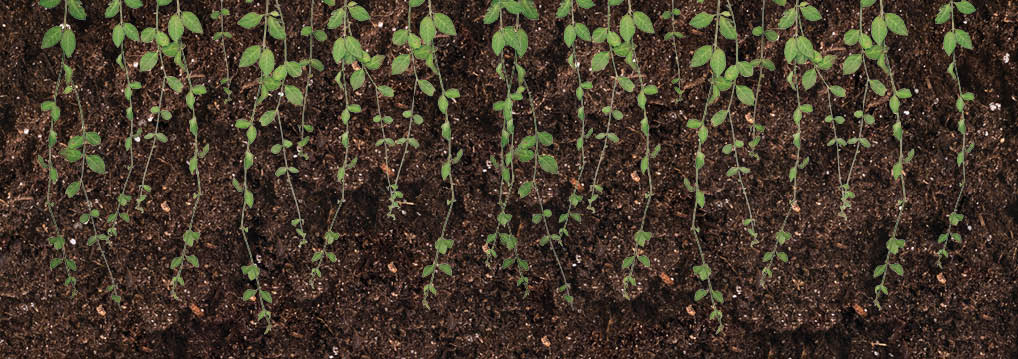Have you heard of invasive species? Around Carmel Clay Parks & Recreation, these are buzz words. We talk about them a lot. That’s because we have a big goal to drastically decrease the invasive species in our parks and help our neighbors remove invasive species from their own backyards.
What are invasive species, or as we often refer to them invasives? According to the U.S. Department of Agriculture, an invasive species is any type of organism that isn’t native to a certain area. In our case, that simply means it isn’t from Indiana. When invasive species are introduced to an ecosystem, they have the potential to cause harm to the environment, the economy, and to human health.
Invasives are prevalent in our parks, neighborhoods and our own backyards and are more hurtful than good. Education is key to understanding how to identify and then eradicate invasives and restore original natural habitats. To help inform the community CCPR hosts nature programs and volunteer events around topics like invasive species removal.
“Invasive species don’t follow property lines, and an invasive species planted in a neighbor’s yard can soon become a problem in the parks, and vice versa. I’m excited that we’re having these conversations more and more. We’re glad to be a resource for our community and the parks and natural resources team is always here to help!” says Michael Allen, CCPR Director of Parks & Natural Resources.

 Invasives have no real value in the ecosystem.
Invasives have no real value in the ecosystem.
They can sometimes provide habitat but rarely provide food sources for animals. An example of this is bush honeysuckle. Birds eat the berries on bush honeysuckle but the berries provide little to no nutritional value.
 Invasives spread rapidly and outcompete native species.
Invasives spread rapidly and outcompete native species.
Asian carp, for example, cause serious damage to native fish populations by battling for food and space. Some terrestrial invasive plants, like garlic mustard produce an enzyme that kills native species around them.
 Invasive species generally have no natural predators.
Invasive species generally have no natural predators.
All of these factors combined lead to invasives outcompeting native plants and animals. Ultimately, this leads to a loss in biodiversity and economic loss.
So, now we know why invasives are bad for us and our native habitat. But what can be done? The best way to stop the spread of invasive species is prevention. If you have invasive species in your backyard, here is what you need to know about them and what you can do to battle these backyard nuisances:
 Understand which species you’re dealing with.
Understand which species you’re dealing with.
This is crucial because best practices vary depending on which species you are removing. For example, some are easy to pull by hand like garlic mustard, while others like bush honeysuckle need to be pulled by the entire root. A useful tool for learning more about different species and how to remove them is the Southern Indiana Cooperative Invasives Management website.
 Be patient.
Be patient.
A challenge for managing invasive species is that it can’t always be done in one afternoon. It may take months or years to completely rid your yard of invasive species. That’s why it’s important to be patient, monitor your progress and be persistent.
 Knowledge is power.
Knowledge is power.
If you have an invasive species in your backyard, consider reporting it. The best way to report invasive species is through EDDmaps phone app, a real-time tracking of invasive species occurrences. This helps you and others in the community understand which invasives are most prevalent in our community. You can also attend a CCPR nature or volunteer event to learn more about natives and invasives and take that knowledge home with you.
 Replace invasives with natives.
Replace invasives with natives.
On your next trip to the greenhouse or nursery, buy native plants rather than non-native or invasive plants. This will help improve wildlife habitat in your backyard.
Join the fight against invasive species—volunteer with Carmel Clay Parks & Recreation. We have several events planned to help remove invasive species in our parks. Learn more and sign up at carmelclayparks.com/volunteer.
Interactive Fun
Make the Swap! Ready to make the swap in your yard? Click here to enlarge the below graphic or print it off to keep handy at home.

Crossword Puzzle
Click on the squares below to answer the questions in this interactive crossword. Or, click here to print off a version we made that you can do at home.
[game-crossword id=”9099″ ]
Need help? Click here to view the answers.
Written By: Jylian Riches
Jylian is the Marketing Content Coordinator for Carmel Clay Parks & Recreation. She oversees the Department’s social media and has written the creative for numerous marketing publications and campaigns.

